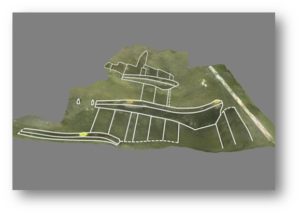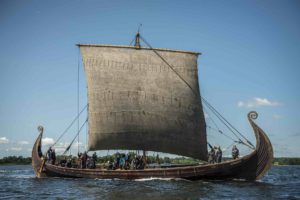After returning from Marseille, France I would like to share some of the highlights of the International Symposium of Boat and Ship Archaeology, abbreviated ISBSA. This was their 15th conference and the second that I attended, and I enjoyed spending a week with friends and colleagues who are just as excited about shipbuilding as I am. In essence it is, as closing keynote speaker Fred Hocker put it, a family reunion.
This family reunion takes place every third year and the location is always relevant to seafaring, boatbuilding and maritime endeavours of some sort. Last time it was in Gdansk, Poland, before that in Amsterdam, and in three years the ISBSA16 with be held in Zadar, Croatia.
This year, the host was Marseille, and what a place! With 2600 years of maritime history and still to this day being a busy port, this place in the Mediterranean Catalan Bay was the perfect frame for an intense symposium on what maritime traces people of the past has left for us to find and how to make sense of them.
Maritime historians and maritime archaeologists are not so different. The questions are pretty much the same: how did people manage to build ships and ports, how was it all administered, what did the economy mean to the construction of the vessels, what were they transporting and how did the transport affect the economy….
When it comes to methodology however, the maritime archaeologist tends to differ significantly from the historian. In order to understand the past (with or without written sources) the archaeologist relies on the objects: scattered amphoras, part of a shipwreck, coins…. They focus on the materials, run tests that can date wood or contents of those amphoras and they seek to reconstruct the ship that has now been reduced to nothing more than a few wooden timbers, some planks and a mound of bricks.
I hope some of these highlights from the many interesting papers presented at ISBSA15 will show how close history and archaeology are linked and how much we can learn from each other through three points that archaeologists and historians alike can benefit from.
Point 1: Just because we do not understand it, does not make it less true.
Vibeke Bishoff from The Viking Ship Museum in Roskilde, Denmark presented the results of a reconstruction of the Norwegian ship from 800 AD, known as the Oseberg ship. The reconstruction Saga Oseberg, launched in 2012, was the second attempt to build a copy of the Oseberg ship, as the first one failed and sank within 20 seconds of its launch back in 1989.
Saga Oseberg was floating, but highly difficult to manoeuvre. The construction was widely questioned, but Vibeke and her team saw another solution to the problems: the way the ship was tested. Being biased by a vast knowledge of sailing, the team thought they knew how to sail a viking ship. However, they managed to open their minds enough to alter their testing methods, which provided valuable results and concluded that Saga Oseberg was a good ship as long as you know how to sail her.
Point 2: Improvise, adapt, overcome.
What do you do when you want to record a shipwreck under water, but the visibility is bad? Maritime archaeology is a place for creative and innovative people.
A team of archaeologists from the German archaeology group AMLA presented their solution to recording shipwrecks in bad visibility. Very bad visibility. To quote Fritz Jürgens, who presented this paper: “Not I-can’t-see-my-dive-buddy bad. More like I-can’t-see-my-own-hand-when-I-hold-it-right-in-front-of-my-mask bad.” The team used a structure-from-motion method, that allows for a 3D model to be constructed from video recording even if some of the frames are unclear. The motion in the video helps the programme understand the data and construct an accurate 3D model that can then be examined. Obstacles, whether it be bad visibility or missing links in written sources keeps us on our toes and create incentive for new methods and approaches.

Results of a photogrammetry survey in the Schlei in Germany. (Credit: Fritz Jürgens, Feiko Wilkes and Jonas Enzmann.)
Point 3: Archaeological data and written sources combined give answers.
Dendrochronology is the science of determining the date and origin of a timber from its tree-rings. When you get your results back from the dendrochronology lab, it is like Christmas morning: how old is the ship? Where did it come from? Basically, the same questions as maritime historians ask in fact.
Aoife Daly, one of the best in this field, could reveal that a big portion of the timbers used to build the Vasa, was grown in Sweden. What was surprising though, was when she compared her findings to the written sources it provided a new dimension to the economy of ship timbers: the wood was felled in Sweden, shipped to Amsterdam, sold and transported back to Sweden. This was an interesting proof of the backwards timber trade in early 17th century. As the archaeologists are borrowing written sources from the historians, let us borrow some artefacts from the archaeologists and see where it leads us.
With five whole days of presentations, it is impossible to list them all here. They reached from ancient times to modern era, from Asia over Europe to the Americas, and from methodology and theory to tangible finds and stunning underwater recordings that made everyone gasp.
As a maritime archaeologist and naval historian, I found how similar the fields are in terms of interest. Though our methodologies are different and we often approach the questions with different perspectives and biases, we do ask the same basic questions. So for all you maritime historians: welcome at our family reunion as our distant cousins with shared interests.











Comments are closed.